Six things to consider when planning your NeoTimber® composite decking project.
Designing your garden decking layout and deciding how to plan your composite decking can be a somewhat daunting task for anyone. Where to start, what to buy, it’s a minefield. The sheer variety of plants, hard landscaping options, features, outbuildings and furniture options are just overwhelming. By looking at a few basics you can simplify the process and make the whole project a lot more manageable. But how to plan your composite deck?
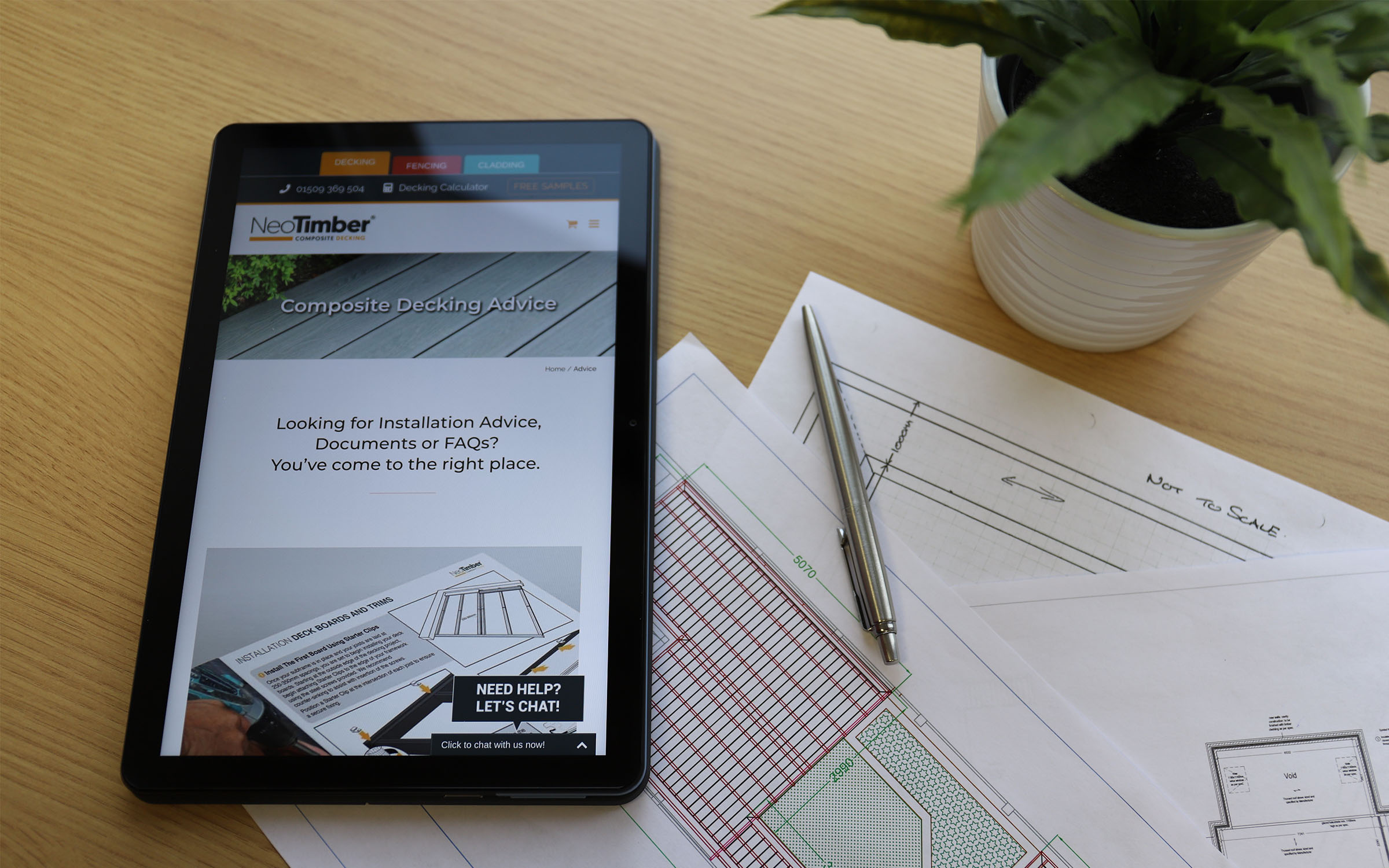
Well, most of us start with function and think about design later. We buy a garden shed to put the bikes and lawnmower in but don’t really think about where it’s going, then realise we need a path, or buy a bench then decide we want a patio. Your garden should be a place where you can relax, if it’s a mishmash of contrasting colours and styles without a coherent theme, you may find it a less relaxing, comforting space to spend that precious downtime. Preparation is therefore key!
We’ve put this simple guide together to try to address some of the primary pre-installation considerations you should have in mind before breaking ground with that spade.
1 A Design For Life
Garden design can be as simple as you want it to be… Just grab a piece of paper and sketch out a rough plan of your garden. It doesn’t have to be to scale, just identify where is best for your deck. Be sure to note down permanent factors such as the location of trees and access routes.
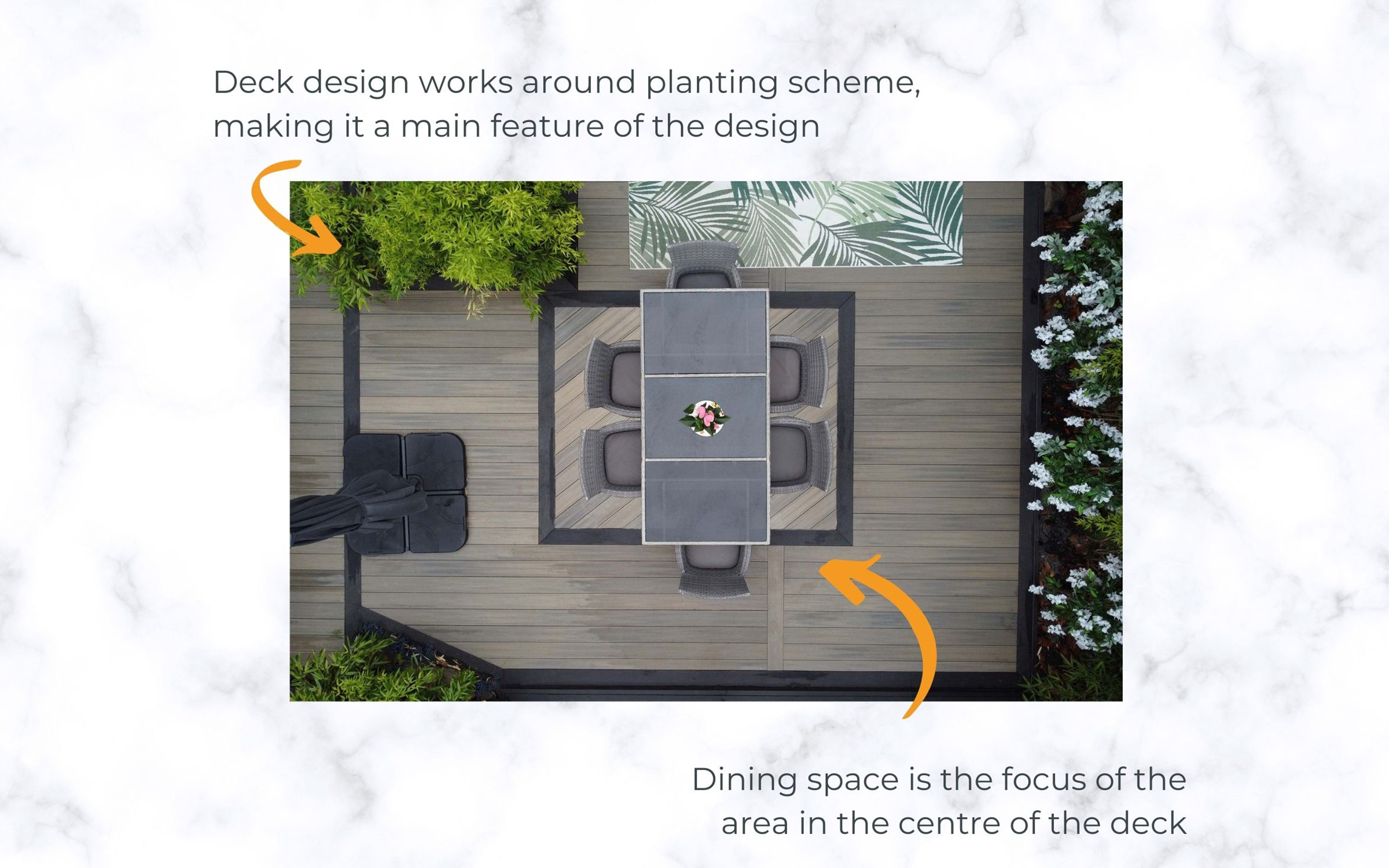
It’s also important to consider which direction your garden is facing. You could buy a compass, but an easy way to tell is to take note of where the sun rises (east) and sets (west) in relation to your garden. A south-facing garden will receive a lot of sunlight throughout the day, therefore it will be less important where you choose when installing decking, though the left side will receive the best of the late evening sun. By contrast, a north-facing garden will be in shade for large parts of the day, unless it is a particularly long garden, as your house will throw the garden into shade in late afternoon. Any seating area should therefore be located at the end of the garden to maximise the amount of sun that can be enjoyed whilst sitting on it. This will help you have a better idea of where and how big your deck needs to be to work in your space.
2Pick A Palette
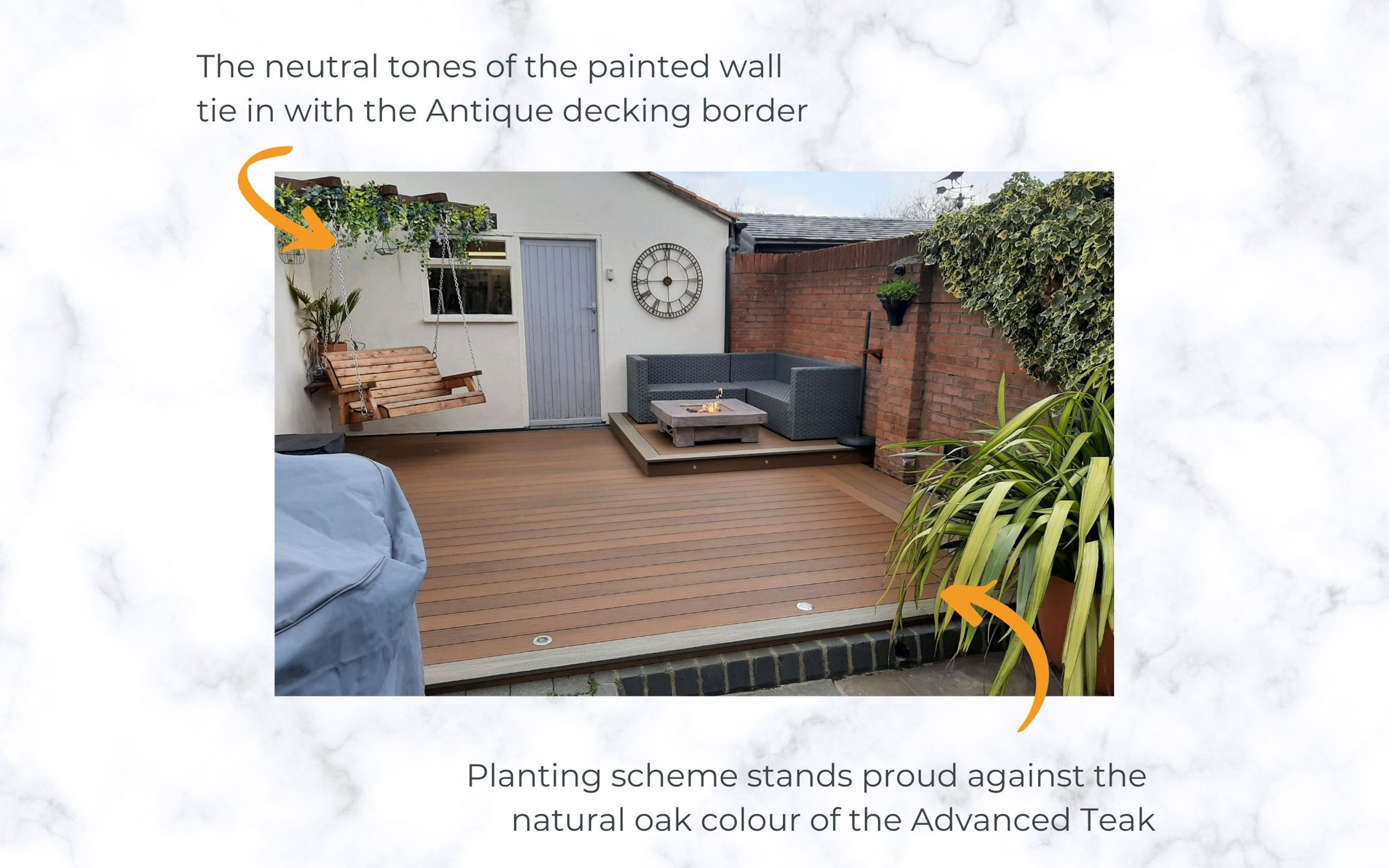
Select a colour theme which works both with the style and design of your house, as well as any permanent features in your garden such as brick walls, lawns or trees. In a new build garden, the garden-scape can be dominated by red brick so don’t feel that you have to match. Hard landscaping can be stark and overpowering, it’s easy to cool this down to something a little more relaxing.
You can soften strong shades with the introduction of a pastel palette and soft furnishings, antique composite decking blends well with pastels. Soften sharp edges by introducing a curved seating area. A mature garden may be more suited to a more traditional colour scheme. Chocolate brown decking may work better in a garden which is predominantly lawn with green shrubs. If you live in a contemporary home and want that style to be reflected in your garden, take your lead from your home’s exterior. Anthracite grey uPVC matches in perfectly with our Advanced range grey composite decking, giving you a clean, ultra-modern outdoor living space.
You will also look at colour when considering the range and style of plants that you want to introduce. We will look at this area more closely, shortly but even at this early stage think about what trees, shrubs, plants and flowers you want to introduce.
3Choose Your Textures
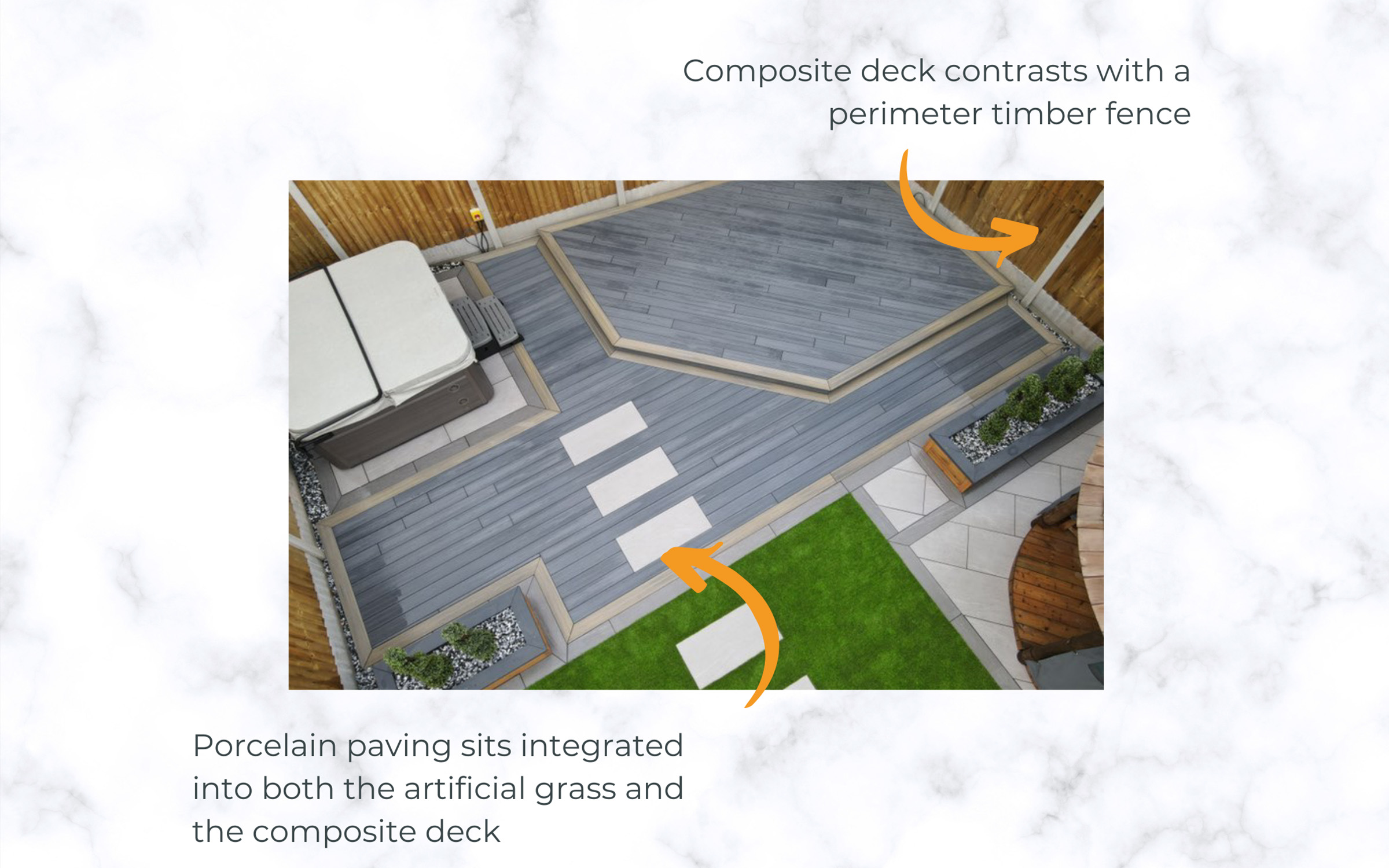
Having decided upon the colour of your composite deck, check which composite decking product you require for the required function, then you can choose whether you prefer a grooved or a wood grain finish, or maybe a combination of both. You can then choose complementary materials and textures.
Textures don’t all have to follow a common theme, mix rough with smooth, spiky with feathery and hard edges with sweeping curves. For instance, if opting for anthracite grey composite decking look at bordering with blue slate, as these blend well together. Alternatively, you could contrast by using white stone instead. If choosing our antique composite decking, look at putting in a red brick path or gravel as an accompaniment. Any textures you choose need to work well with your existing theme to create a sense of synergy and maintain consistency within your wider design plan.
If choosing chocolate composite decking, the use of mulch or bark in your borders will tie in and give a cohesion to your overall design theme. Teak decking has a warmer, almost Mediterranean flavour, being the colour of yacht varnish and so blends beautifully with crisp white stone and crystal-clear water.
4Plan Your Planting
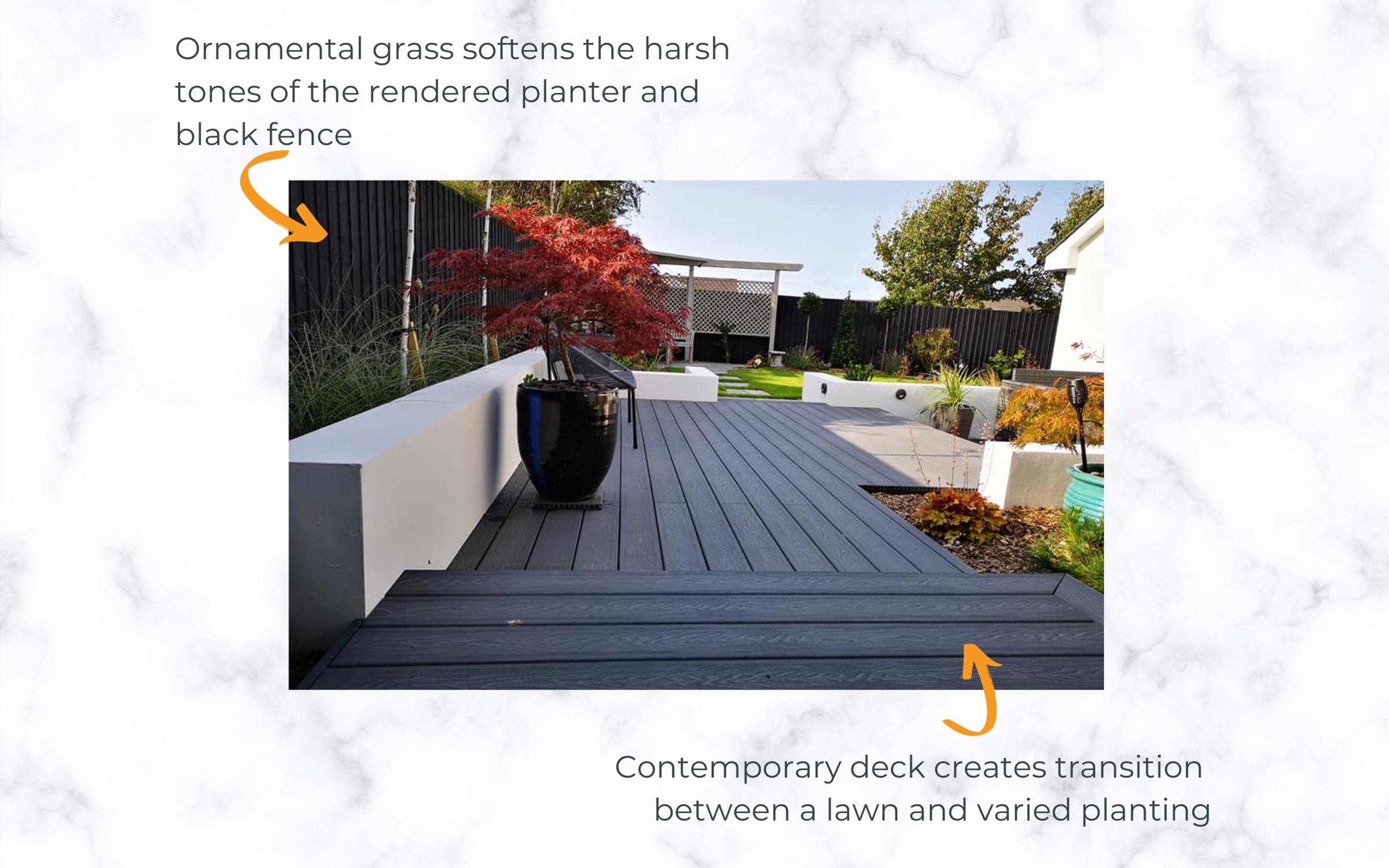
A blank canvas garden-wise is simultaneously the most inspiring and the most terrifying concept. The primary issue is where do you start? It is almost impossible to take on a garden planting project whole-scale, like on TV, unless you are an expert. For most of us, a garden is built piece-meal as and when we have the time, energy and the resources to bring it in. The trick is to start by deciding your key schemes and themes. If you have young children, a lot of flowerbeds may be unwise as they will likely be trampled by children chasing footballs etc. If you’re a nature lover, try to introduce hedges and shrubs where birds can find cover.
Establish the skeleton of your garden by identifying key locations for trees you want to plant, with taller plants at the back of your borders and smaller plants and flowers towards the front. Nature doesn’t grow in straight lines, so don’t be afraid to overlap plants and have them overhang the edge. This kind of planting is far more naturalistic than the traditional close-cropped gardens of the past. Pay attention to pH levels in your soil to try to choose plants that are best suited for your plot; your soil may dictate your garden colour scheme so look at this first before choosing composite decking or hard landscaping. There are plenty of books available to advise you on this in more detail.
5What’s The Deck’s Function?
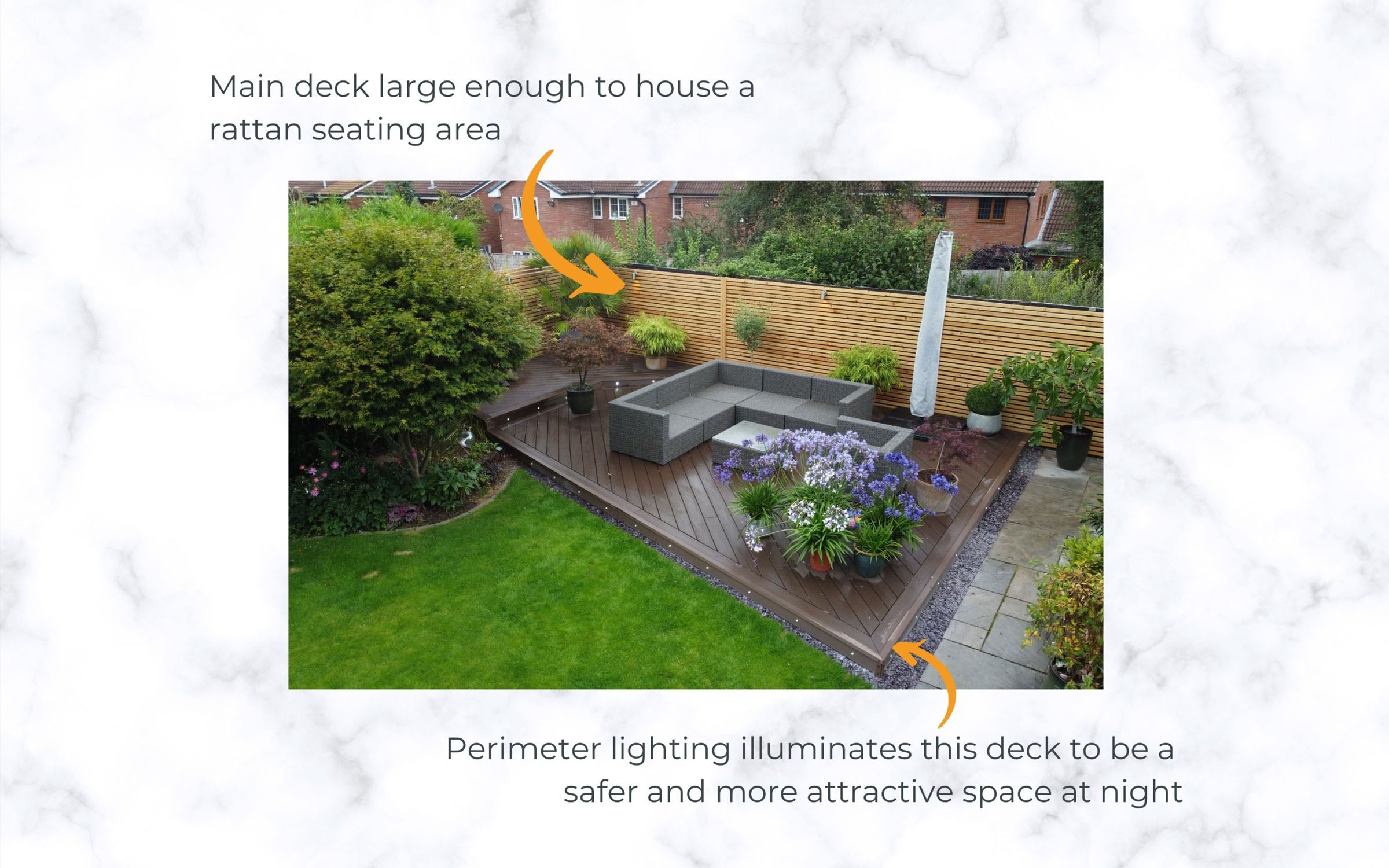
There are so many things to consider when first planning a garden decking project. One of the first things you must establish, is the function of your deck, as well as the locations of any drains to which you may require access.
This is because, invariably you will need to put infrastructure in place before considering aesthetics and planting. For instance, if you are considering installing a hot tub you will need to set power and water connections in place before you start laying foundations for your deck. The same goes for any water features you may want to build. Similarly, a relaxation zone will need to be large enough to accommodate seating. It sounds simple, but consider the design and size of your deck based on the type of furniture you would like… Not the other way around!
Consider also whether planning permission is required, especially in conservation areas or if building a terrace which may overlook neighbouring properties. Other considerations you may like to bear in mind, are whether you’d prefer to carry barbecue items to the bottom of the garden or whether closer to the house would be preferable. A deck in summer can be an outdoor living room. Assuming it is a sunny spot, placing it up against the house will make for a convenient overspill for parties and family events.
6DIY Vs. Professional Installer
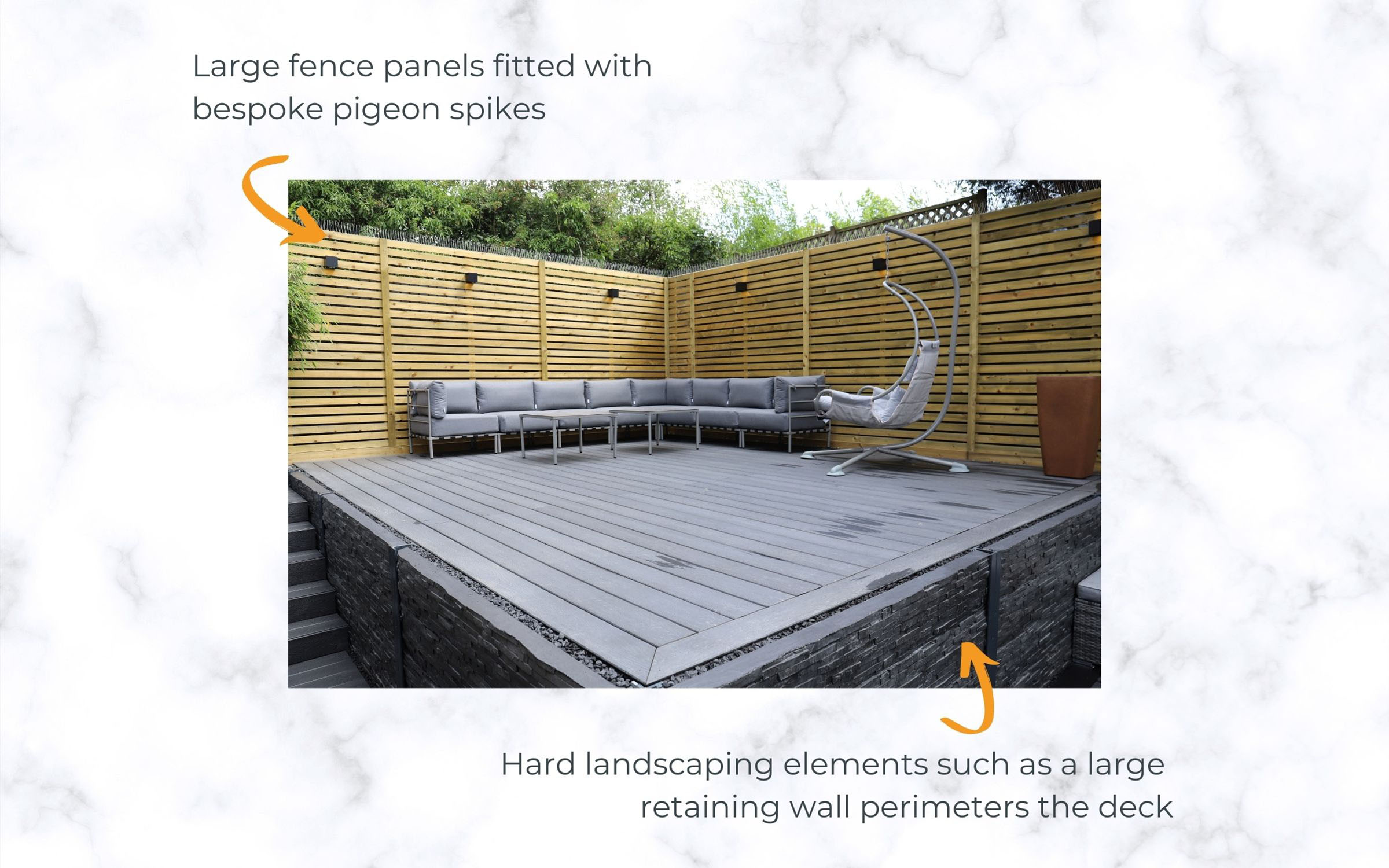
When taking on new projects, many of us are guilty of biting off more than we can chew. Installing decking is not quite as straightforward as it may seem, at first. You’ll need a few more tools than just a handsaw and a power driver. This said, any accomplished handyman or DIY expert should be able to install composite decking.
Composite wood is an extremely dense composition of plastic and wood fibres. With that said, usual woodworking tools can be used to cut the product. Most importantly, however, is ensuring that the correct substructure is in place. While we offer guidance on what subframe solution may be best for your project, it may be best to consult a professional to offer advice on the best route forward.
If in any doubt, speak to a reputable landscaper who will be best placed to advise on the type of installation you will ned and to fit your decking for you. Over the past decade NeoTimber® have developed a strong relation with an increasing number of professional installers located nationally. Our list of approved installers holds the details for landscapers and installation professionals local to you who we have worked with in the past whom we trust and would be happy to recommend, should you require assistance.
To discuss your decking requirements, speak to our expert sales support team today and start imagining your dream garden.
Need Further Support or Advice?
If you’ve still got questions that have not been answered here, or you would like additional advice,
support or assistance then please give one of our friendly experts a call and we’ll be happy to help.
Just give us a call on 01530 382 180.
